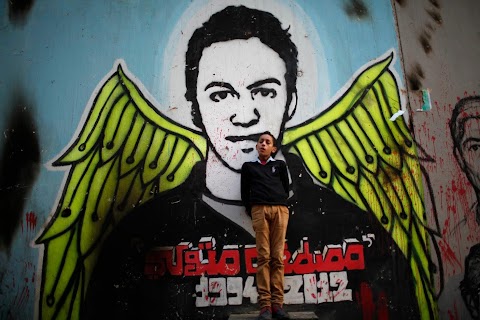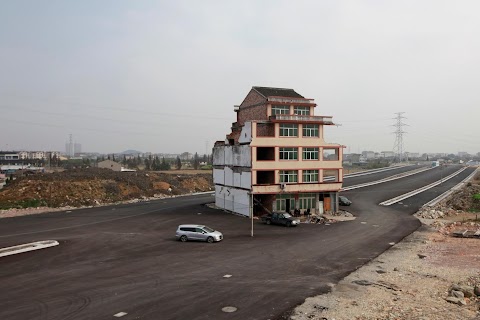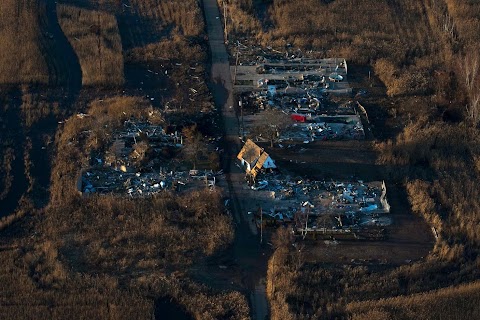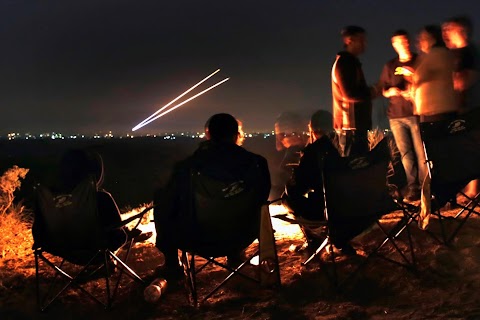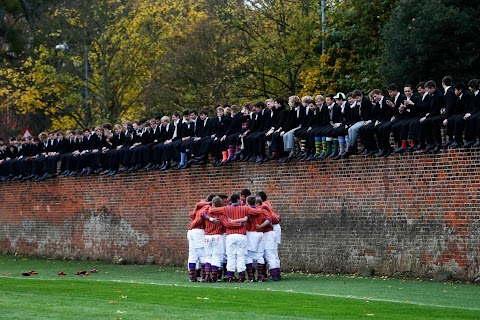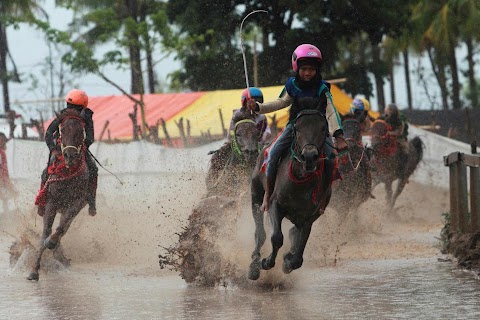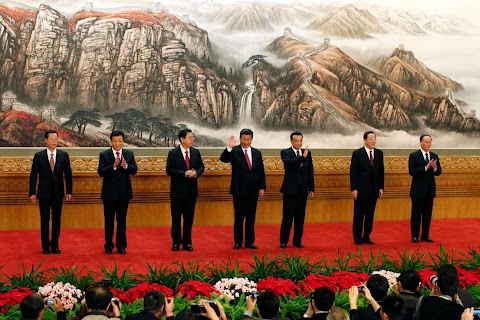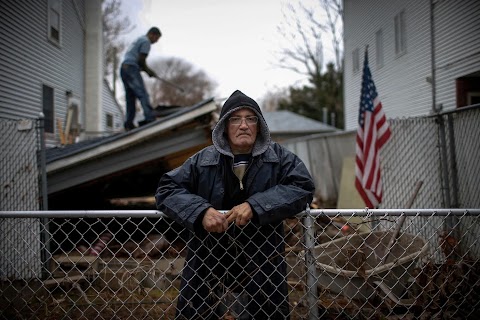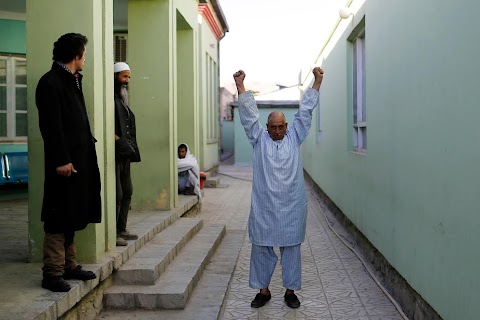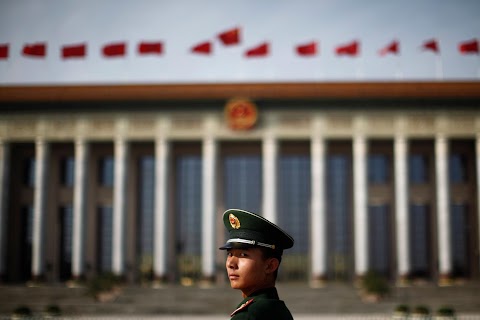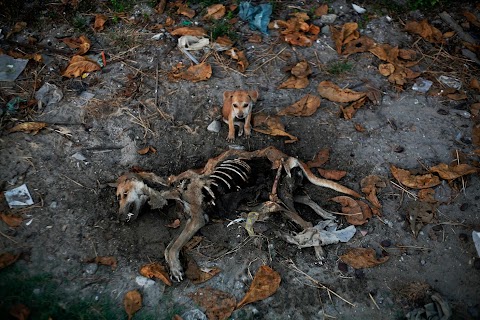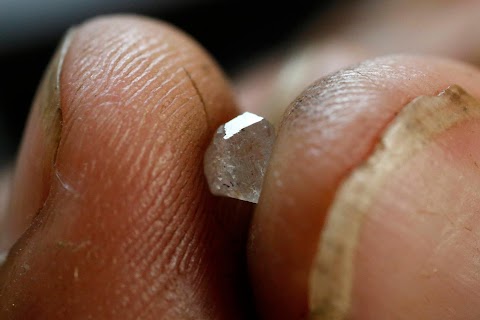
Hunting diamonds in the jungle
 Jorge Silva
Jorge Silva
Dreams of bounty have been drawing workers to the Amazon jungle, where they are hunting a tiny but precious prey: diamonds.
Illegal miners labour in dangerous and isolated conditions to rip open the rainforest floor, hoping to make their fortune from the diamonds and gold that lie beneath.

Illegal mines now pockmark parts of the jungle in the border area between Venezuela, Brazil and Guyana. The people who excavate them work barefoot, sunk into the mud, miles away from any medical assistance, in an area only accessible by small plane or boat. Mudslides, snakebites and tropical diseases are all common.
But although the dangers are great, so too are the rewards. Four grams of gold are equal to a month’s worth of wages in Venezuela, and an ounce of the metal can fetch $1,700.
Slideshow

An indigenous man prepares his canoe before departing with barrels of gas to the area where the mining takes place.

The wife of an illegal miner flies on a Cessna plane into the mining area, with her baby in her arms.

A man does maintenance work on an Antonov An-2 Soviet-era aircraft before it departs with supplies to the mines. The small plane weighs over eight tons when loaded with a cargo of gas and when it arrives it touches down on makeshift, muddy landing strips.

An illegal mine has been excavated in the jungle floor in the southern Venezuelan state of Bolivar, near the border with Brazil.

Mines like this are difficult to access, dug in areas without any roads.

The Venezuelan government is threatening to clamp down on illegal mining, but currently thousands of families and whole towns are sustained by the illicit industry.

Miners clear the soil with high-pressure hoses in order to get to the layer containing gold and diamonds. The high pressure of the hoses and their metal nozzles can be lethally dangerous.

Miners work sunk deep into the mud.

Splattered with dirt, a miner named Ramon flashes a gold letter 'R' embedded in his front tooth.

The miners often work barefoot. If they contract diseases, no doctors or medical assistance is available nearby.

A miner's boots dry outside a shack in the jungle.

A miner, illuminated by candlelight, sits in his home in the mining town of Ikabaru.

A safe belonging to a gold and diamond merchant stands inside a wooden shack in the jungle village of Parkupik. The settlement is an indigenous community of around 100 Protestant families, and it is also the port where gold and diamonds are marketed in the area.

A diamond cutter in the town of Santa Elena de Uairen inspects a rough stone.

A pile of rough diamonds lies on a trader’s desk.

Gold and diamond merchants wait outside a shop for customers and for miners selling their wares.

Heavily armed guards grip their weapons while standing outside a business licensed to buy rough diamonds and gold.
"The clearing made by the miners made it look as if someone had taken a bite out of the jungle."
We are just north of the Amazon Basin, riding a boat on the Ikabaru River. The passengers are people who buy gold and diamonds. They stop at each of the illegal mines that appear as craters on the river’s edge. They carry small, accurate-looking weighing scales, magnifying loupes, burners to melt gold and separate mercury, and large spoons to collect it.
They are also carrying bags full of cash.
We are very close to the porous and at times imperceptible triple border between Venezuela, Brazil and Guyana. The area is remote and hard to access. Getting here takes a small plane or a day of navigating along the river. There are no roads.
We had flown here days earlier in a small Cessna aircraft over the region where the immense savanna and its table-top mountains meet the jungle. Our first landing was on a strip where a group of people was preparing a robust Antonov An-2 Soviet-era plane to carry supplies to the mining area.
While we were there I spent a good portion of the morning talking to the pilot and waiting for the clouds to clear. He told me he worried about the danger of landing on short, muddy landing strips in a plane that weighs over eight tons when it is loaded with its cargo of gasoline barrels.
Later, after several hours driving in a 4x4 vehicle, we spotted a couple of men in the middle of a crater, working waist deep in the mud. They were removing the layers of vegetation with a pressure hose to reach the strata holding the “material,”: the rock that contains gold and diamonds.
The appeal of working in illegal mines is enormous. Four grams of gold are equal to an average monthly wage in Venezuela. An ounce of the metal goes for over $1,700. The gold fever is understandable if we consider that an ounce used to sell for $250 ten years ago.
But in these mines and the towns around them life is expensive. A bottle of water costs around $12, and a 250-litre tank of gasoline, which would cost just $5 in the rest of the country, here goes for up to $1,200.
Those who can, work hard, but they don’t know if they will be able to carry on. The government is threatening to clamp down on clandestine mining. Currently thousands of families and whole towns live off this activity, directly or indirectly.
To get to another mine we had to cross a river that was 196 feet (60 meters) wide, with waist-high water. The clearing made by the miners made it look as if someone had taken a bite out of the jungle. Some people were cutting trees while others, several feet below, were blasting away the jungle floor with a high pressure water hose. They were riding the hose as if trying to tame a wild anaconda.
The hose is very dangerous. Its pressure and its metal nozzle turn it into a lethal weapon for the miners who work barefoot, sunk in the mud. There are no doctors or medical assistance anywhere nearby. In recent weeks two miners died here in the morning and their colleagues were only able to recover their bodies early the following day. Mudslides, snake bites and tropical diseases are frequent.
For our last stop, we reached Parkupik, and from there I took the boat on Ikabaru River. This indigenous community of around 100 families belonging to the Adventist Church is the port where gold and diamonds are marketed in the area.
Kids played in the river next to their fathers, who were preparing their curiaras (canoes) to travel to the mines, while gold buyers spent the hot hours of the afternoon watching satellite TV in a hut that doubles both as a warehouse and a kitchen.
Days later, in a city nearby, a diamond buyer adjusted the gun on his waist while he greeted a miner who brought some “rocks.”
He explained with enthusiasm that diamonds are the perfect currency: “You can carry thousands of dollars in the pocket of your pants without setting off any metal detector. There are no borders for them.”
Back in the mine, Ramón walked away, exhausted, at the end of his working day. His face, ravaged by the sun, was sprinkled with mud. But when he smiled, he revealed a golden 'R' inlaid in his tooth.
